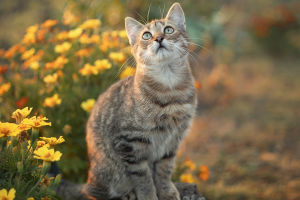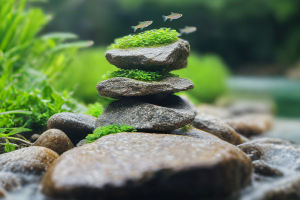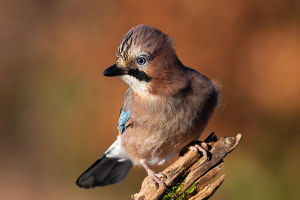
As a cat parent, you may have thought that taking care of your furry friend is limited to feeding them, giving them water, and cleaning the litter box.
While these things are important, there's one more key aspect of cat care that many of us often overlook – daily maintenance. Cats need regular grooming and care, just like humans do.
Here's the thing: cats have six main areas that need our attention regularly. Their eyes, ears, teeth, nails, nose, and chin all require our care. By keeping an eye on these areas, we can not only reduce the risk of diseases but also spot early signs of any issues. Let's dive into the daily care routine that we should follow to ensure our cats remain healthy and happy.
Consider Your Cat's Emotions First
The first and most important rule for cat care is to always consider your cat's mood before starting any grooming or maintenance. If your cat shows signs of stress, fear, or aggression, it's best to wait until they are calm and relaxed. Forcing them into grooming can not only make them dislike it more but also cause them unnecessary stress, which can lead to behavioral problems or even health issues.
I personally prefer grooming my cat when they are lying next to me or just waking up. And here's a little tip: when we approach our cats with a calm and positive attitude, it increases our success rate. A study published in Animal Cognition shows that cats respond better to humans who display positive emotions, like smiling and being relaxed.
Eye Care
Under normal circumstances, your cat's eyes should be free of discharge. A small amount of brownish crusty discharge can sometimes appear, which is perfectly normal, similar to how we get eye crust. Cats often clean their eyes themselves, but if they can't manage to get rid of the discharge, that's where we come in.
To clean your cat's eyes, use a cotton ball or makeup wipe soaked in saline solution. Gently wipe from the inner corner of the eye to the outer corner, repeating as needed. Never try to pick the discharge off with your fingers as it could cause injury to the sensitive skin around the eyes or lead to infection. If your cat experiences constant eye watering or thick discharge, it might be time to visit the vet as these could be signs of a viral infection.
Ear Care
Healthy cats generally don't have much earwax. For most cats, cleaning their ears once or twice a month with an ear drop solution is sufficient. Over-cleaning can irritate their ears and cause infections, so be mindful not to go overboard.
If you have a breed like Scottish Fold or American Curl, their ears require extra attention. These breeds are prone to ear problems due to their unique ear shapes, so regular cleaning is crucial. If you notice your cat shaking its head or scratching its ears excessively, or if you see dark brown or black earwax, this may indicate an infection, and a visit to the vet is needed.
Dental Care
Dental health is often overlooked in cats, but it's just as important as the rest of their body care. Just like humans, cats can develop tartar and plaque, which can lead to gum disease and other health issues.
The solution is simple: brush your cat's teeth with a pet-safe toothbrush and toothpaste. Start slow, using positive reinforcement to make it a pleasant experience for your furry friend. Doing this regularly helps prevent plaque buildup and keeps their mouth fresh and healthy.
Nose Care
Normally, your cat's nose should be clean and free of discharge. However, during dry weather, you may notice small clumps of dried nasal discharge, often called “nose boogers.” This is completely normal and is simply a result of tears from their eyes draining into their nasal passages.
While it's important to clean these away regularly, if you notice yellow or green discharge, this could be a sign of an upper respiratory infection, and your cat may need medical attention. Breeds with flat faces, like Persians or Exotics, may be more prone to nasal issues, so extra care should be given to keep their noses clean.
Chin Care
After eating, many cats tend to get food stuck on their chin. Cats often clean their faces, but they can't always reach their chin, which is where we come in. Regularly wipe your cat's chin with a clean cotton ball or a soft towel dipped in warm water or saline solution to remove any residue or acne-like bumps.
Some cats are prone to “black chin,” a condition that occurs when their sebaceous glands produce too much oil. If your cat's chin looks persistently dirty, or if it's red and irritated, it's a good idea to consult a vet.
Nail Care
Your cat's claws can get quite sharp and long, especially if they don't have scratching posts or places to naturally wear them down. Long nails can dig into their paw pads, causing pain or infection.
To prevent this, trim your cat's nails regularly. Be careful not to cut too close to the blood vessel, which is visible through the semi-transparent nail. Use a proper pet nail trimmer, and make sure to keep your cat calm during the process. If your cat's claws are getting too long, it's best to trim them every 2-3 weeks.
Wrapping It Up
By focusing on these six areas of care, we can ensure our cats stay healthy and happy. It's important to start grooming when your cat is young to make the process smoother as they grow older. Cats are creatures of habit, so the earlier you introduce them to regular grooming, the easier it will be.
Finally, don't forget to reward your cat after grooming! Treats, cuddles, or a special meal will help them associate grooming with positive experiences. This will reduce their stress and make future sessions easier for both of you.
Lykkers, remember that your cat's well-being depends on your care and attention. So, let's make sure we're taking good care of our furry friends, and they'll thank us with plenty of purrs and cuddles!


